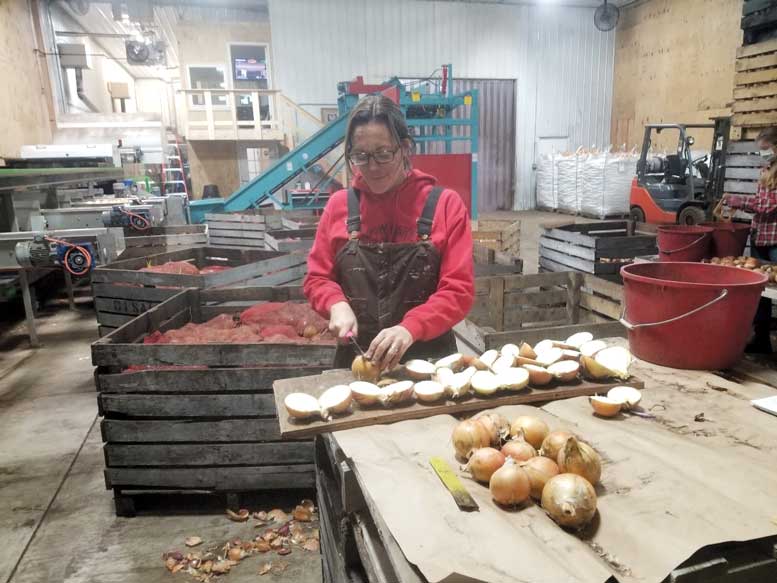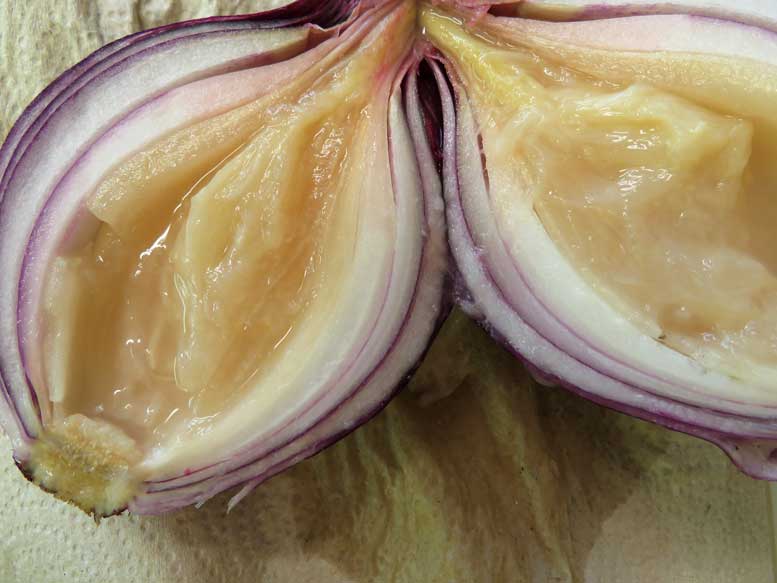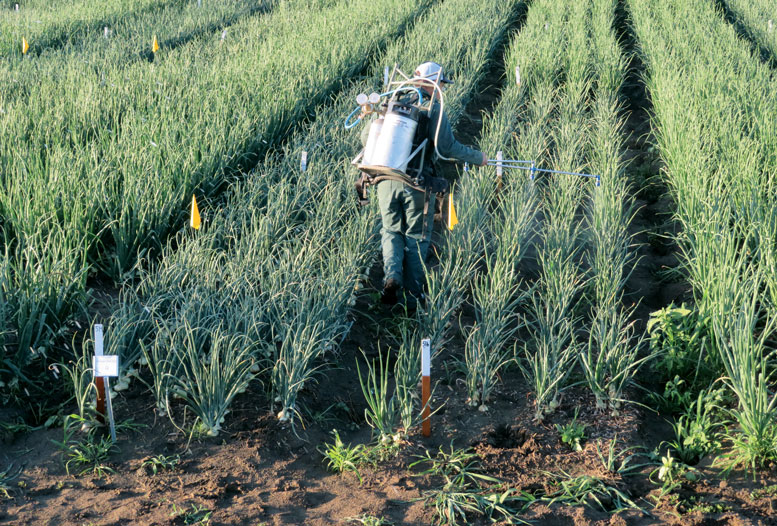Stop the Rot: A National Collaboration to Research, Combat Bacterial Diseases of Onion
By Heather MacKay and Lindsey du Toit, Washington State University

in Pasco, Wash.
The Stop the Rot project team has completed the first full season of field and lab work.
The goal of the Stop the Rot project is to develop practical, economically sound strategies for bacterial pathogen detection and management that will improve profitability and sustainability of onion production. It is vital that the research addresses industry priorities and provides tools that will be useful for growers.
Findings from stakeholder surveys in our first year of research confirmed that bacterial diseases and economic losses due to onion rots are a significant economic issue for the onion industry. All the groups surveyed agree that there is no single highly effective management strategy for reducing economic losses and that a combination of diagnostic tools, treatments and management strategies will be needed.
Understanding Bacterial Pathogens
From late 2019 through 2020, researchers across six onion growing regions in the U.S. collected symptomatic onion leaves and bulbs from fields and storage facilities, from which bacteria were isolated for identification and pathogenicity testing on onion. The purpose of this national bacterial survey, which will be repeated in the 2021 and 2022 seasons, is to get a snapshot of the many types of bacteria present in onion crops across the U.S.
While we know Burkholderia, Pantoea, Enterobacter and Xanthomonas are the most common genera of bacteria that cause diseases of onion, and our first year’s bacterial survey turned up these “usual suspects” around the country, we found a surprisingly broad diversity of other bacterial genera associated with symptomatic onion leaves and bulbs. The surveys will help us understand which bacteria are prevalent in different onion production regions and what their roles might be in the progression of bacterial diseases of onion.
Genetic research will be completed with selected pathogenic bacteria from the surveys with the goal of understanding which genes enable these bacteria to cause diseases of onion. Our team is developing molecular diagnostic tools to allow rapid identification of the pathogenic bacteria, which will help growers respond more effectively to infections in their crops. In the 2021 season, we will be testing methods for detecting onion pathogenic bacteria in soil, irrigation water and other potential sources of inoculum.

Managing Bacterial Diseases in the Field
Field trials were designed by this team to assess the efficacy of a range of practices and treatments on bacterial diseases, many of which are currently used by growers. The last evaluations of onions in storage from these trials were obtained in February 2021, so we are updating the trial reports with these data to share with onion stakeholders.
Irrigation, Fertility
Four states conducted trials in 2020 to assess how irrigation and fertility practices affect onion bacterial diseases. Preliminary results suggest further research is warranted to assess if earlier termination of irrigation can reduce bacterial bulb rot under conditions of high disease pressure without adversely affecting bulb yield.
Bactericides
Bactericides were evaluated in replicated field trials across seven states during 2020: Colorado, Georgia, New York, Oregon, Texas, Utah and Washington. Seven onion cultivars were included across the sites (Avalon, Calibra, Century, Granero, Redwing, Salute and Vaquero), and 22 products were evaluated across the trials.

Cultural, Post-Harvest Practices
We tested various late-season cultural practices in field trials in Georgia, New York and Washington to see how these influence bacterial diseases. These included variations in practices such as the timing and method of topping onion bulbs, rolling the tops and undercutting bulbs, as well as harvest methods (mechanical vs. manual). The trials will be repeated in 2021, along with a trial in Georgia to evaluate the impact of onion neck length after topping on development of bacterial bulb rots.
We also tested four commercially available products applied to onion bulbs after harvest to assess the efficacy of these products at suppressing bacterial bulb rots in storage. The trial was completed in a simulated storage facility, and a video of the setup is available at youtu.be/VSExAvjJAT8. Final results will be shared this summer.

What’s Next?
The 2021 bacterial surveys have commenced in early onion production regions in Georgia and Texas. Many of the field trials will be repeated in 2021, and the Washington state team is adding trials to investigate the interaction of select herbicides with bactericides for managing onion diseases.
Extension publications, research summaries and disease notes covering results of the first year of the Stop the Rot project will be published in summer 2021. These, along with other information the team generates, will be available at www.alliumnet.com/projects/stop-the-rot.
Authors’ note: This work is supported by Specialty Crops Research Initiative Award 2019-51181-30013 from the USDA National Institute of Food and Agriculture. Any opinions, findings, conclusions or recommendations expressed in this publication are those of the authors and do not necessarily reflect the view of the U.S. Department of Agriculture.

